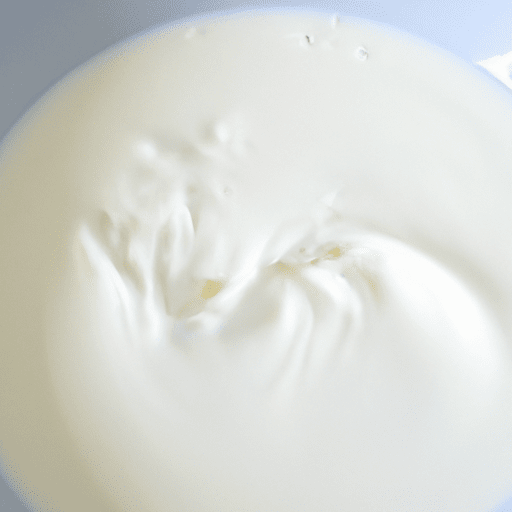The Delightful World of Buttermilk
Have you ever wondered about the creamy elixir known as buttermilk? This tangy and versatile ingredient has been a staple in many culinary traditions for centuries. Whether you want to add depth to your baking or give a refreshing twist to your morning smoothie, buttermilk is here to elevate your culinary creations. Join us as we dive into the delightful world of buttermilk – its taste, common uses in cooking, nutritional value, and fascinating history.
Taste and Texture
Buttermilk, with its creamy consistency and slightly tart flavor, is a true delight for the taste buds. It possesses a unique tanginess that distinguishes it from regular milk. This tanginess can vary depending on the method used to produce it. Traditionally, buttermilk is made by churning butter, which leaves behind a liquid residue known as buttermilk. The flavor can range from mildly sour to pleasantly tangy, imparting an extra layer of complexity to your dishes.
Common Uses in Cooking
Renowned for its versatility, buttermilk has found its way into countless recipes across different cuisines. Its acidic nature makes buttermilk an excellent ingredient for tenderizing meats. Marinating chicken or pork in buttermilk helps break down tough fibers, resulting in succulent and flavorful dishes.
Bakers also cherish buttermilk for its magical properties. When combined with baking soda, the acidity of buttermilk creates an effervescent reaction, resulting in light and fluffy baked goods. From tender cakes to sumptuous pancakes, buttermilk adds a touch of tang and moisture to all your favorite treats.
Buttermilk isn’t limited to savory or sweet recipes- it can also elevate your morning routine. A tall glass of buttermilk, when combined with fruits, provides a perfectly refreshing start to the day. Its creamy texture and zesty flavor create a harmonious elixir, leaving you feeling revitalized.
Nutritional Value
Buttermilk isn’t just a flavorful addition to your culinary ventures; it also packs a nutritional punch. It is a rich source of essential nutrients, including calcium, potassium, and vitamin B12. These nutrients play a vital role in bone health, nerve function, and energy production. Furthermore, buttermilk contains probiotics, which contribute to a healthy gut flora and boost your immune system.
Buttermilk has lower fat content compared to regular milk, making it an excellent choice for those seeking a lighter alternative without compromising on taste or texture. With its abundance of nutrients and relatively low calorie count, incorporating buttermilk into your diet can help you strike a balance between indulgence and nourishment.
Fascinating History and Facts
Buttermilk has a rich history dating back centuries. In ancient times, when cream was churned to make butter, the liquid byproduct was naturally fermented, creating buttermilk. This versatile ingredient was cherished by many cultures, including the Vikings, who considered it a staple in their diet.
In traditional Indian cuisine, buttermilk plays a prominent role as a cooling beverage, particularly during hot summers. It is often spiced with cumin, ginger, or mint to enhance its refreshing properties. The popularity of buttermilk transcends borders, with variations found in cuisines from Eastern Europe to the southern United States.
To add a touch of historical charm to your cooking, you can explore traditional recipes that use buttermilk. Dive into the world of Irish soda bread or Southern-style buttermilk biscuits to experience timeless classics that have stood the test of time.
Conclusion
Buttermilk, with its tangy flavor, versatility, and rich history, is truly an ingredient worth embracing in your culinary repertoire. From its humble origins as a dairy byproduct to its modern-day presence in various cuisines, buttermilk continues to captivate taste buds and enhance dishes worldwide. So why not embark on a delicious exploration and discover the magic of buttermilk in your own kitchen? Happy cooking!
Buttermilk
Origin: Buttermilk is a dairy product originally made as a byproduct of churning butter. It was traditionally obtained by allowing fresh milk or cream to sour naturally over time. Nowadays, buttermilk is primarily made commercially by adding lactic acid bacteria cultures to pasteurized milk.
Common Uses: Buttermilk is commonly used in baking, especially for making biscuits, pancakes, waffles, and cakes. It is known for its acidity and tangy flavor which adds a unique taste to these dishes. Buttermilk is also used in marinades for tenderizing and flavoring meats, as well as in salad dressings, soups, and sauces.
Nutritional Benefits: Buttermilk provides several nutritional benefits. It is a good source of calcium, which is important for healthy bones and teeth. Additionally, it contains protein, vitamins (especially riboflavin or vitamin B2), and minerals such as potassium and phosphorus. However, it is important to note that the nutritional content of buttermilk can vary depending on the specific brand or production method.
Unique Properties: One of the unique properties of buttermilk is its acidity. The lactic acid produced during fermentation gives it a tangy taste and helps to activate baking soda in recipes by creating carbon dioxide bubbles, resulting in lighter and fluffier baked goods. Buttermilk’s acidity can also make it useful as a marinade ingredient, as it helps in breaking down the proteins in meat, making it more tender and flavorful.
Historical Significance: Buttermilk has a long history, stretching back to ancient times. It has been valued for centuries as a nutritious and versatile food. In traditional cultures, it was often enjoyed as a refreshing drink or used for its culinary properties. Over time, the commercial production of buttermilk has evolved to meet modern demands, and it continues to be a popular ingredient in cooking and baking today.
Please note that while buttermilk can refer to the traditional fermented dairy product, there are also commercially produced “cultured buttermilk” products that may have slightly different characteristics.




Use the share button below if you liked it.
It makes me smile, when I see it.